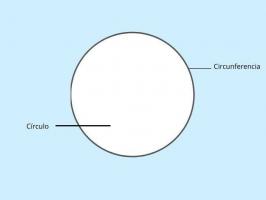Difference between anabolism and catabolism
Anabolism and catabolism are the parts into which the metabolism. The anabolism it is a synthesis reaction where energy is consumed. The catabolism It is a decomposition reaction where energy is released. Although they are two different processes, they work in a coordinated way.
While anabolism builds large molecules from smaller ones, catabolism is a reduction reaction where a complex molecule is converted into a simpler one.
| Anabolism | Catabolism | |
|---|---|---|
| What is it | Phase where the molecules that the body needs are built. | A process that breaks down large molecules in the body into smaller ones. |
| Phase type | Constructive. | Destructive. |
| Energy | Consumed by the body. | Releases it for the body. |
| Reaction | Endergonic, reduction and synthesis or construction. | Exergonic, decomposing or destructive and oxidative. |
| Molecules | Complex molecules are produced from simple molecules. | Simple molecules are produced from complex molecules. |
| Hormones |
|
|
| Examples | When amino acids are converted to protein, glucose to glycogen and fatty acids to triglycerides. | When proteins are converted to amino acids, proteins to glucose, glycogen to glucose, and triglycerides to fatty acids. |
What is anabolism?
The word anabolism comes from the Greek Ana, which means 'up', and whale, which we can translate as 'launch'.
Anabolism is one of the two parts of metabolism, which is also known as biosynthesis.
Anabolism is a constructive chemical reaction where synthesize complex molecules from simpler ones which can be organic or inorganic. Thus molecules can grow and renew, or be stored as energy reserves.
This metabolic process of building, where energy is consumed to obtain large molecules from smaller ones, it is possible thanks to the energy contribution of adenosine triphosphate (ATP).
In these reactions, the most oxidized compounds are reduced. Through anabolism, living things can form proteins from amino acids and thus maintain body tissues.
Anabolism functions
- Increase muscle mass.
- Form the cellular components and tissues of growth.
- Store energy.
Stages of anabolism
- In the first stage, precursors are produced, such as amino acids, monosaccharides and others.
- The precursors are then activated, using energy from adenosine triphosphate (ATP).
- In the third stage, more complex molecules are produced, such as proteins, polysaccharides, lipids, and nucleic acids.
You may also be interested in seeing Photosynthesis and respiration.
What is catabolism?
Catabolism is a word that comes from the Greek kato, which means 'down', and whale, which means ‘launch’.
Catabolism is the part of the metabolic process by which they are degraded, reduced or oxidize different organic nutrients to their simplest forms for the body to assimilate and transform them into energy. This energy is essential for the functioning of anabolism.
The energy that is released is stored in adenosine triphosphate (ATP) molecules, and thus the cell can perform vital actions such as muscle contraction and molecule synthesis.
Is a destructive phase reduction where, from a complex organic molecule, such as carbohydrates and lipids, other simpler ones such as H are obtained2O, CO2, lactic acid or ammonia.
A catabolic process is the digestionIn it, large molecular complexes are decomposed and transformed into simpler forms so that they can be used as raw material and energy in anabolic processes. For this reason, digestion is essential for anabolism to function properly.
Bacteria are often capable of metabolizing iron and sulfur.
Catabolism functions
- Degrade organic nutrients.
- Extracting chemical energy from degraded nutrients to be used by the body.
- Nourish the body using tissues when there is a lack of food.
Stages of catabolism
- Large organic molecules, such as proteins, polysaccharides, or lipids, are degraded to amino acids, monosaccharides, and fatty acids, respectively.
- Small molecules are carried into cells and transform into even simpler molecules, releasing energy during the process.
- Eventually, the coenzymes in the electron transport chain are oxidized.
You may also be interested in seeing:
- Eukaryotic cell and prokaryotic cell
- Active and passive cellular transport.


